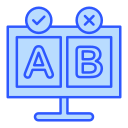Core Foundations: How Intro Modules Set the Tone
Some courses linger on syntax while others push you into building a tiny app on day three. When I mentored Ana, a career switcher, she thrived only after her course swapped toy snippets for a small budgeting tool. Early relevance kept her momentum alive.
Core Foundations: How Intro Modules Set the Tone
Programs vary wildly: a few assume zero math background, others expect comfort with logic and terminal basics. The best intros include gentle placement quizzes and optional prep tracks. If you’ve seen a smart pacing strategy that eased your start, share it with the community.
Core Foundations: How Intro Modules Set the Tone
Autograded quizzes can validate progress, but quick lab challenges reveal deeper understanding. One platform’s weekly mini-labs helped my study group catch errors before they calcified into habits. What early assessments helped you most, and which felt like busywork? Drop your insights for future learners.








